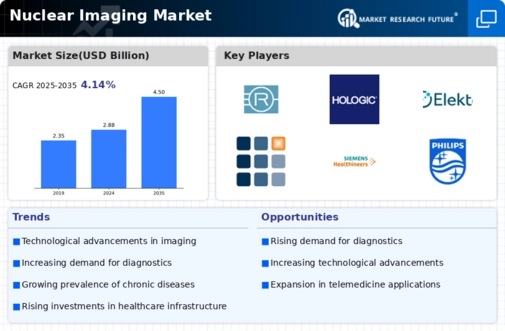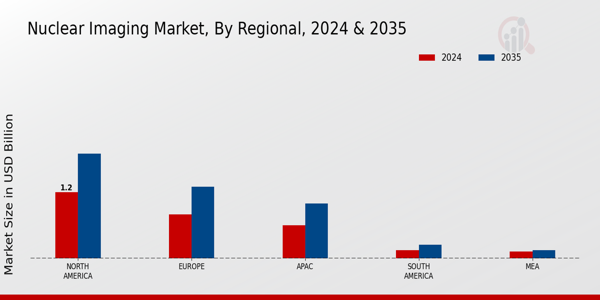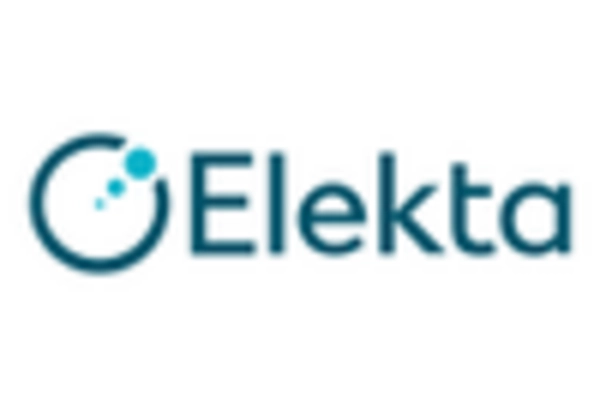Growing Awareness of Early Diagnosis
The Nuclear Imaging Market is also propelled by the growing awareness of the importance of early diagnosis among patients and healthcare providers. Educational campaigns and initiatives aimed at promoting preventive healthcare are leading to increased utilization of nuclear imaging techniques. As patients become more informed about the benefits of early detection, the demand for nuclear imaging services is likely to rise. Studies indicate that early diagnosis can significantly improve treatment outcomes, particularly in oncology. This heightened awareness is expected to contribute to the expansion of the nuclear imaging market, as more individuals seek out advanced diagnostic options.
Rising Incidence of Chronic Diseases
The Nuclear Imaging Market is significantly influenced by the rising incidence of chronic diseases, including cancer and cardiovascular disorders. As these conditions become more prevalent, the demand for effective diagnostic tools increases. Nuclear imaging plays a crucial role in the early detection and management of these diseases, allowing for timely interventions. Data indicates that the global burden of chronic diseases is expected to rise, with projections suggesting that by 2030, nearly 75% of deaths will be attributed to such conditions. This trend underscores the necessity for advanced imaging solutions, thereby propelling the growth of the nuclear imaging market.
Aging Population and Healthcare Needs
The Nuclear Imaging Market is significantly impacted by the aging population, which presents unique healthcare challenges. As individuals age, the prevalence of age-related diseases, such as Alzheimer's and other neurodegenerative disorders, increases. Nuclear imaging is essential for diagnosing and monitoring these conditions, thereby driving demand. Data suggests that by 2050, the number of people aged 65 and older will double, leading to a greater need for effective diagnostic tools. This demographic shift is likely to create substantial opportunities for growth within the nuclear imaging market, as healthcare systems adapt to meet the evolving needs of an aging population.
Technological Advancements in Imaging Techniques
The Nuclear Imaging Market is experiencing a surge in technological advancements that enhance imaging techniques. Innovations such as hybrid imaging systems, which combine modalities like PET and CT, are becoming increasingly prevalent. These advancements improve diagnostic accuracy and patient outcomes, thereby driving market growth. The integration of artificial intelligence in image analysis is also noteworthy, as it streamlines workflows and reduces interpretation errors. According to recent data, the market for nuclear imaging technologies is projected to grow at a compound annual growth rate of approximately 7.5% over the next few years. This growth is indicative of the industry's commitment to adopting cutting-edge technologies that facilitate better healthcare delivery.
Increased Investment in Healthcare Infrastructure
The Nuclear Imaging Market benefits from increased investment in healthcare infrastructure across various regions. Governments and private entities are allocating substantial resources to enhance healthcare facilities, which includes the procurement of advanced imaging technologies. This investment is particularly evident in emerging economies, where there is a concerted effort to improve diagnostic capabilities. Reports suggest that healthcare expenditure is expected to rise significantly, with many countries aiming to achieve universal health coverage. Such initiatives are likely to bolster the demand for nuclear imaging services, as healthcare providers seek to offer comprehensive diagnostic solutions.


















Leave a Comment